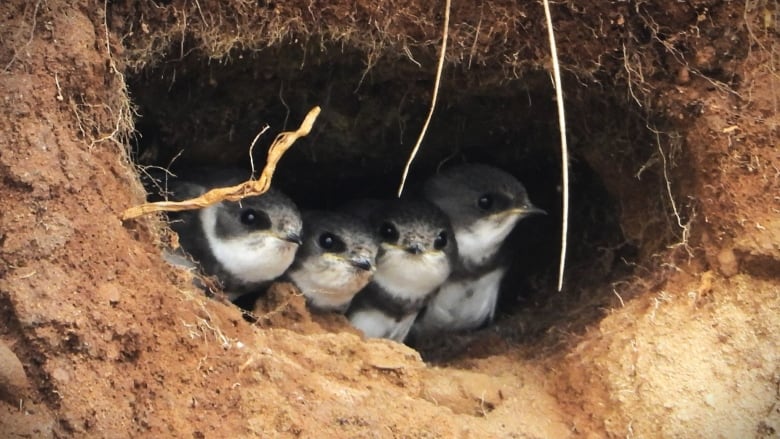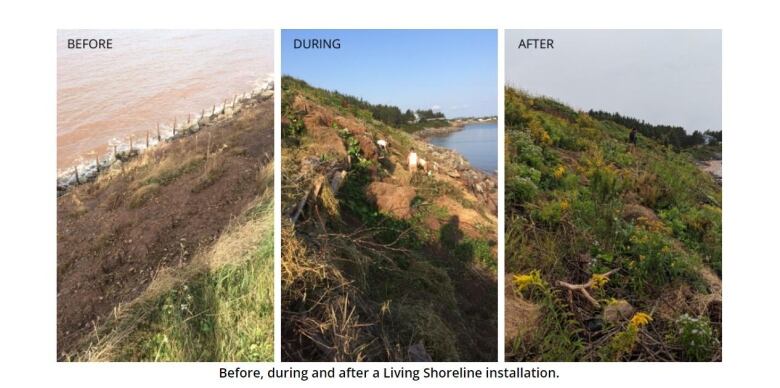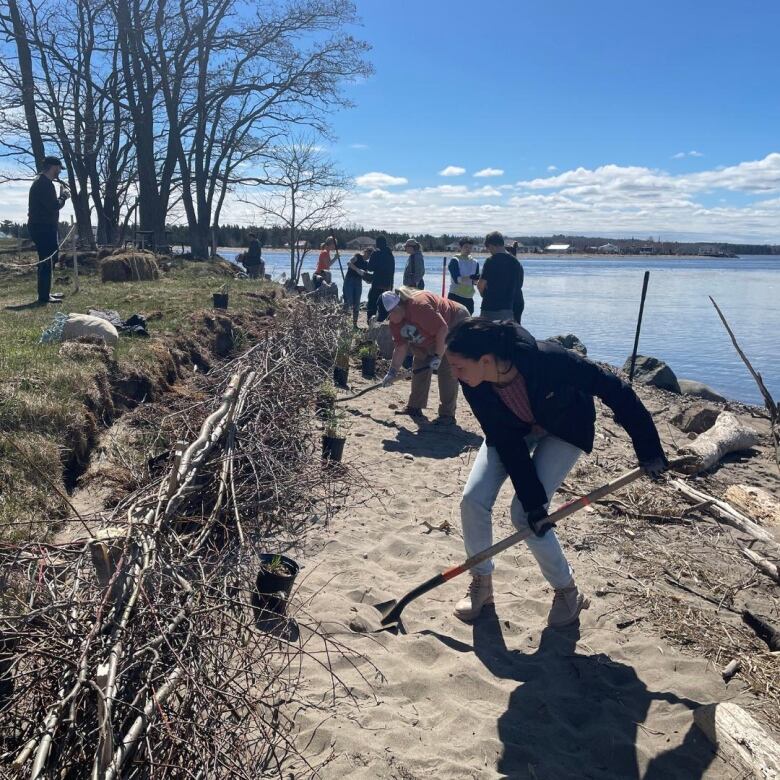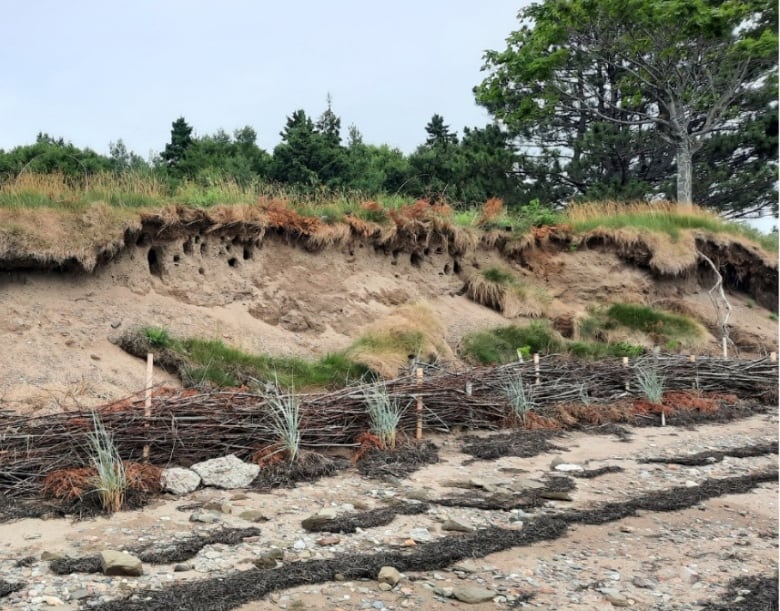Bathurst beach project helps stabilize erosion and protect endangered swallows
Community volunteers hope living shoreline a better option than concrete or rock armour on shoreline

As rock armour walls become increasingly common along New Brunswick's coastlines, a new method of preventing erosion and preserving the habitat of an endangered species is being tried at a public beach in Bathurst.
And so far it appears to be a success.
At Youghall Beach Park, more than 50 people have volunteered in the "living shoreline" project to protect abank swallow colony.
Kelsey Butler, the Atlantic director of Birds Canada,a partner on the project, said they planted willow trees, beach grass and other native perennials back in May. They also wove branches to build what is known as a wattle fence to secure the shoreline until the plants take hold.

A living shoreline stabilizes coastal banks and shorelines by growing plants and trees rather than covering the area with rock or concrete.
"When you want to stop erosion on a coastal bank what a lot of people do is create rock armouring or concrete walls and that will help stop erosion, but it's not good for bank swallows," said Butler.
Now that the bank swallows have returned and are nesting at the site, she considers it a success.
"We were really waiting with bated breath to see if they would return," she said of the tiny and "super cute" birds.
"They're so adorable, and obviously aerial insectivores are so important for ecosystems and they eat bugs. They help keep the bug population down," Butlersaid. "Once people know about it they get pretty excited to help."
To make their homes, bank swallows burrow 60 to 90 centimetres into near vertical slopes of coastal bluffs and riverbanks. If the bank is too soft or there is too much erosion, the burrow will collapse.

Butler says bank swallow populationin the past 50 years hasdeclined by an astonishing 98per cent for reasons that includeclimate change, insecticide use and human activity disturbing their nesting sites.
Rocks vs plants
According to Birds Canada, rock amour can cost between $1,000 and $10,000 per metre, while the cost of planting and maintaining a living shore ranges from $600 to $1,600 per metre.
For the project at Youghall Beach, the price tag came to $35,000, which includes a three-year commitment for upkeep by Helping Nature Heal, a Nova Scotia-based ecological restorationcompany.
After three growing seasons,the shoreline will have matured and shouldbe able to sustain itself.

Project partner Sam Robichaud is with the Esgenopetitj Watershed Association. She said every ecosystem is different but for this projectthe new shoreline will not only help bank swallows but alsoother species, including pollinators and fish.
"It also helps us, too, because we want to connect to the water, we want to connect to the land, and we can't do that if there's rock walls all along the coast," Robichaudsaid.
"I think it's just beneficial for everybody."
Antidote forclimate anxiety

The next step for partners at Youghall Beachis signage to explain the importance of the project and the nesting site for the bank swallows.
Butler said for those who work in the environmental sector, climate anxiety can be overwhelming but work that mitigates climate change is rewarding.
She remembers the moment a call came from one of the volunteers saying the bank swallows had returned.
"We were so excited it was like the best day. We were over the moon. It's just awesome."














_(720p).jpg)


 OFFICIAL HD MUSIC VIDEO.jpg)
.jpg)



























































































